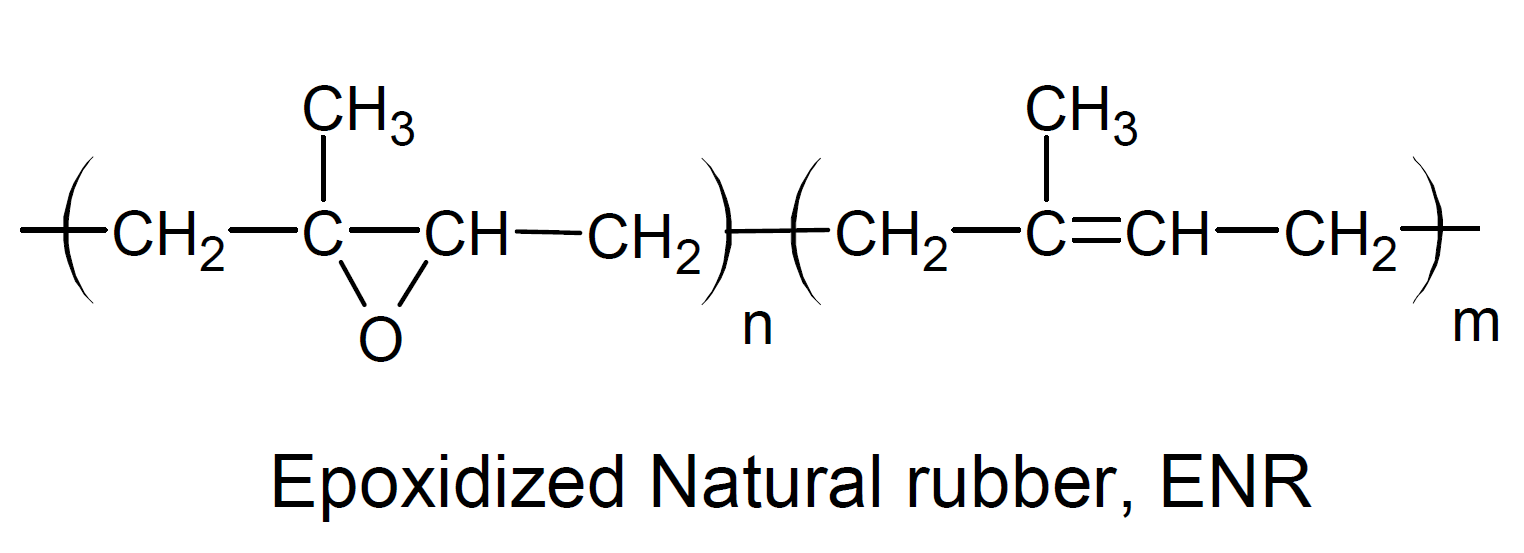ENR – Epoxyprenes
(Epoxidized Natural Rubber)
Properties and Applications
Epoxyprene (ENR) is cis 1,4-polyisoprene with epoxide groups randomly distributed along the rubber backbone. It is mainly produced in Malaysia from natural rubber latex by employing the hydrogen peroxide/formic acid in-situ process.

Epoxidation increases the polarity and glass transition temperature of the rubber and thus changes the properties of vulcanized rubber. For example, ENR has much improved heat and chemical resistance because the oxirane ring increases the hydrophilicity and reduces the number of double bonds in the backbone. Epoxidation also improves the miscibility with polar elastomers such as NBR and ECO and increases damping, hydrocarbon oil resistance, and lowers the gas permeability.
The two most common levels of epoxidation are 50 and 25 mole percent, referred to as ENR-50 and ENR-25 respectively. ENR-50 undergoes strain crystallization like NR, but with oil resistance comparable to a medium acrylonitrile NBR and gas permeability similar to butyl rubbers.1 Silica-reinforced ENR rubbers or blends with natural rubber have lower rolling resistance than NR and better wet traction than oil-extended styrene-butadiene rubber (OESBR) and have been considered as tire tread materials.2
ENR-25 and ENR-50 can be used in many applications where natural rubber (NR) is used but where improved heat and oil resistance, compatbility with more polar elastomers and/or lower gas permeability is required. Applications include anti-vibration mounts, footwear components, tires, bearings, and adhesives.
Manufacturers & Distributors
1C.S.L. Baker, I.R. Gelling, R. Newell, Rubber Chem. & Technol., Vol. 58, No. 1, 67-85 (1995)
2K. Sengloyluan, K. Sahakaro, W.K. Dierkes, J.W.M. Noordermeer, European Poly. J., Vol. 51, p.p. 69-79 (2014)